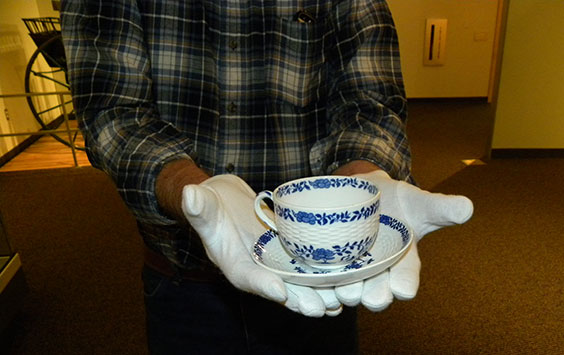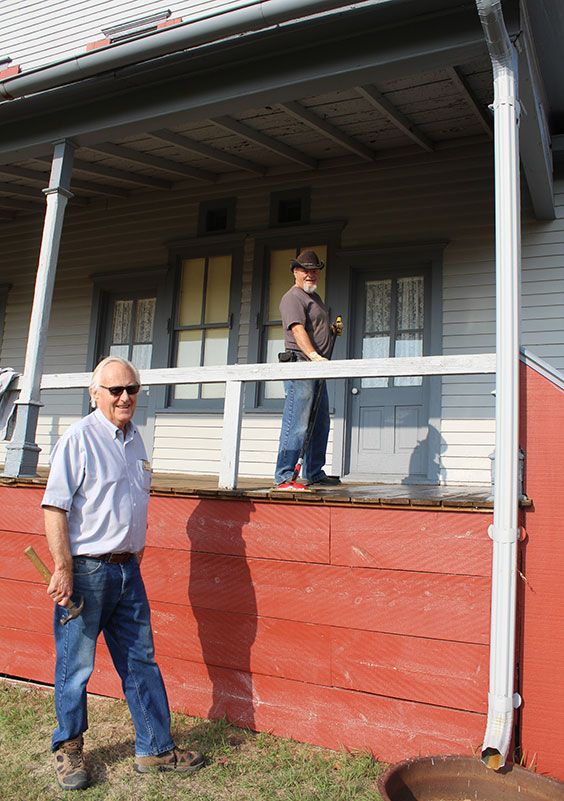Did you know that some historic houses hibernate? Like a giant bear in one of our national parks, the Chateau de Morès must be carefully conditioned to survive the frigid North Dakota winter. And, y’all, it gets cold. Last year, temperatures in Medora clocked in at well below zero, and, for both the Chateau and this Carolina gal used to spending Christmas in flip-flops, that is cold enough.
Why do we shut the Chateau down? Because it lacks a modern heating system. By mid-October, it is simply too cold for guests to tour comfortably. And it was too cold for the Marquis and Madame as well. When he built the Chateau, the Marquis included only one fireplace. Despite its size and central location—the fireplace is about 5 feet deep by roughly 4 feet tall in the middle of the home—it did not provide enough warmth for year-round living.
So we follow their example! Before frost forms on the windowpanes, the Chateau team arms itself with white gloves, bed sheets, and (at least in my case) layers of wool and synthetic blends. Then we head out to protect fragile linens, pack away prized china, and cover century-old furniture. This undertaking is one of my favorite parts of the job because it gives us the opportunity to examine our artifacts. During the summer, our focus is sharing the Chateau with guests from around the world—just like the Marquis and Madame! But the cold weather gives us the chance to make sure the house is fit to survive another season. All 26 rooms plus the basement—that’s a little more than 7,000 square feet—get some tender, loving care from the team.
Welcome to my Top Five Highlights of Winterizing Our Chateau!
1. We get to touch the artifacts! First, let me put our curator’s mind at ease: We wear agency-approved gloves and always use both hands. Still you can’t deny there is something truly incredible about holding the same teacup that Madame used 137 years ago.

Ed Sahlstrom holds a teacup, part of the original collection used by Madame and the Marquis from 1883-86. Madame chose this Gower pattern for its dainty durability—the perfect set of china for life in the badlands.
2. We explore all the nooks and crannies of the Chateau. The house may be small compared to French chateaus, but for us there are still spots tucked away. For example, Madame’s maid was the only servant who had her own workroom hidden beneath the staircase.
3. We treat any problems we discover. It’s an old house, and sometimes things go wrong, or they just need a little TLC. When that happens, we always try to take care of any issues before the first snow. This year, the porch needed conditioning, so we grabbed our brushes and got to work.

Ed Sahlstrom (assistant supervisor) and Mike Sunday (grounds personnel) stain the porch of the Chateau. The porch will live to see another summer!
4. We crawl underneath the Chateau. You read that correctly — we get to go underneath the house. How cool is that? We make sure nothing is nesting in the crawl space and confirm that the unfinished basement is as protected as possible. This basement may look uninteresting, but it once held about 600 of bottles wine, beer, and mineral water that the family left behind. Check us out on Facebook to learn the whole story and find out where you can buy the same wine the Marquis left when he headed east.
5. Finally, we walk on the roof! We historians aren’t usually a thrill-seeking bunch. At least not physically. Give us a good archival mystery, and we are entertained for days. But it’s not so often we do gravity-defying activities. Except at the Chateau, where we annually traverse the second-story rooftop to close the shutters. Don’t worry—we use a spotter and basically hug the house as we make our way across the surface. But it’s a thrill, and the views are incredible.
So there you have them—my favorite aspects of winterizing the Chateau. Happy fall, y’all! This Carolina girl is already bundled up.

